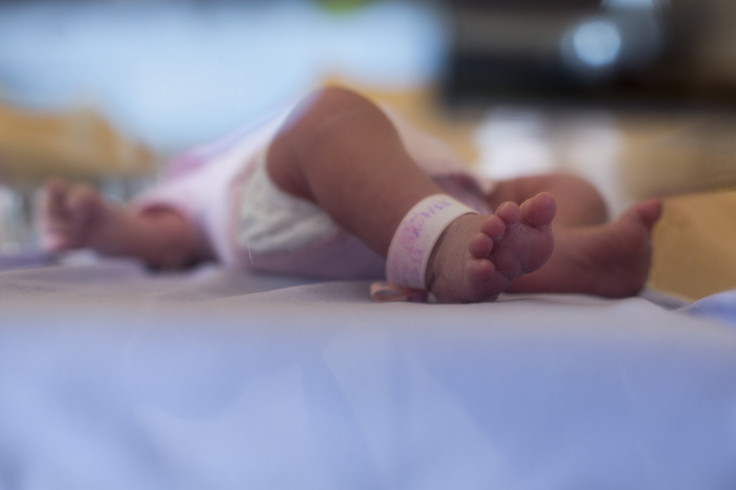What Is Pseudarthrosis Of The Tibia? Toddler Undergoes Broken Leg Surgery

A 13-month-old girl received surgery for her broken leg Thursday after doctors said her injury would never heal due to a rare genetic disorder. The toddler suffered the leg break during her birth when her mother underwent a planned c-section at a New York hospital in December 2016.
Allon, 34, and Lauren Theilen, 31, welcomed twins Evelyn and Jackson but soon after the birth, doctors informed the couple their child Evelyn's leg broke and she would not recover as she is suffering from a genetic disorder called pseudarthrosis of the tibia, defined as a "false joint" and a break in the bone which will not heal on its own. Doctors suggested the only option would be amputation.
The family decided to take help from specialists for the treatment of the toddler, and their search ended with a top-rated specialist in Florida, who would try to save Evelyn's leg. A GoFundMe page for the toddler received $15,371 at the time of publishing this report.
Pseudarthrosis develops within the first two years of life and is very rare, affecting one out of 250,000 births.
Allon described his daughter's diagnosis as "disastrous to say the least," according to the Daily Mail. He added there was finally hope as the specialist in Florida would attempt to give her a shot at a normal life. Evelyn's parents are not only working towards finding the cure for their daughter, they are also opening up to raise awareness about these rare conditions.
"Within an hour [of their birth], there was all different types of doctors bombarding my wife and I. They all had one message to share; that my daughter's leg was never going to heal, and we should get comfortable with the notion of amputation. That destroyed us," Allon told the Daily Mail.
It is unclear if Evelyn's leg broke due to any negligence during the delivery, which led to the diagnosis.
According to the Paley Institute: "The cause of CPT (Congenital Pseudarthrosis of the Tibia) is currently unknown; however, there is a strong association with neurofibromatosis in 50 percent of cases and and an association with fibrous dysplasia in 10 percent of cases. Reports indicate the pathologic processes of CPT are linked to the periosteum, which forms the outer layer of bones and is crucial for regrowth following a fracture. Patients with CPT have a thick scar layer surrounding their bones rather than the periosteum. For this reason, once a fracture has occurred it will not heal spontaneously. The current theory on the mechanism of CPT is that there is a lack of blood supply to the periosteum caused by an accumulation of nerve cells that destroy the blood vessels connected to the periosteum. This leads to low oxygen in the periosteum (known as hypoxemia). Since the periosteum is responsible for bone growth, this results in weakening of the bone.
"The difficulty of treatment lies in the weak healing power at the fracture site, a tendency to refracture after treatment, and the difficulty of stabilizing small osteoporotic bone fragments in small children. Even in cases where a union has been achieved, there is a difficulty in maintaining it."
© Copyright IBTimes 2024. All rights reserved.











